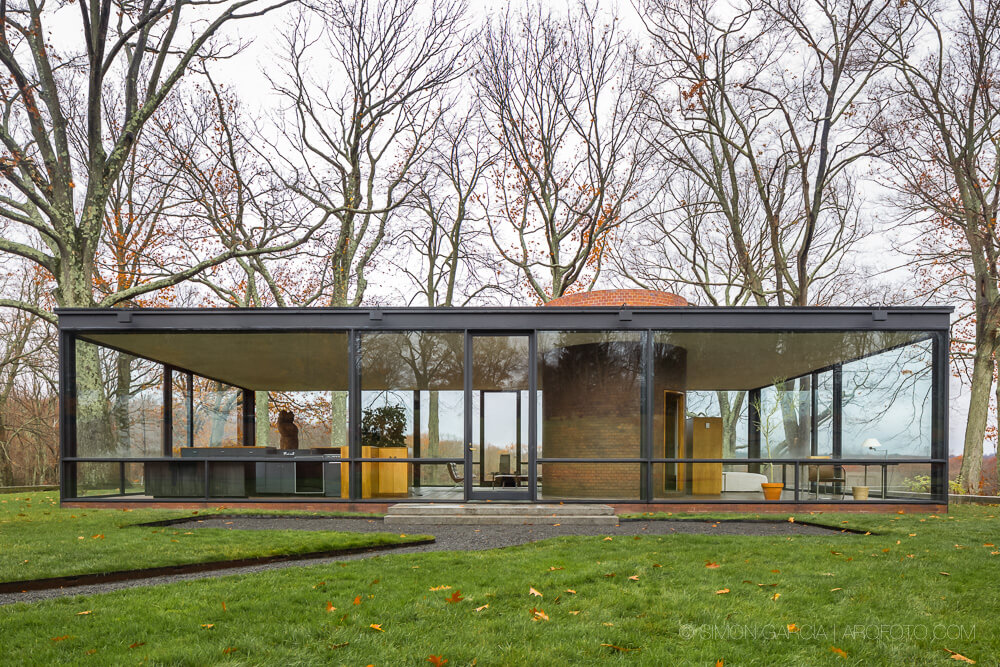Table Of Content

Notable among these is the 79-foot-tall Cardboard Cathedral erected in 2013, which has become a permanent landmark. The Paper Log House’s components were fabricated over five weeks before being transported to the site in New Canaan. On March 18th and 19th, a team of 17 students and faculty assembled the structure over a fifteen-over period during two days. The installation aims to explore the unexpected opportunities offered by disparate building materials, such as glass, brick, and paper. In 1995, Johnson added a postmodern element to his own residence, the Glass House.
The Glass House - A film by Open Space - World-Architects
The Glass House - A film by Open Space.
Posted: Tue, 26 Sep 2023 07:00:00 GMT [source]
Image gallery
The MoMA currently has a curator position named after the man—Philip Johnson Chief Curator of Architecture and Design—and his name written on the walls of the museum he helped found. The guesthouse sits as a smaller counterpoint to the main glasshouse and is constructed from red bricks. The Guest House (Brick House) was remodelled in 1953, but contains a bedroom, reading room and bathroom connected by a narrow corridor. By Isabel DrogeMSc Arts and Culture, BA Art HistoryIsabel is an art historian and writer from Amsterdam, the Netherlands. She holds a MSc in Arts and Culture Studies and a BA in Art History, both from the University of Amsterdam. Isabel’s biggest passion lies with European art from the fin de siècle period.
Restoring the Brick House at the Glass House - - World-Architects
Restoring the Brick House at the Glass House -.
Posted: Thu, 16 Nov 2023 08:00:00 GMT [source]
The Farnsworth House
Rather than constructing a single house with multiple purposes, Johnson put several buildings on his plot, each with its own unique function. However, the Glass House, which is located in the center of the property, seems to have served as the main house. Although its decorations were simple, the house had a living area, a kitchenette, a bathroom, and a sleeping area. Even after Johnson had given his Glass House to the National Trust for Historic Preservation in 1986, the two men remained the property’s residents until their deaths in 2005. While the Glass House had a lot of privacy thanks to the size of Johnson’s land, its transparency and the use of glass walls were not desirable at all times. The Brick house was the opposite of the Glass House since most of its walls were without any windows.
Architecture school and Army service

Out of this exploration, she has constructed a fascinating and often penetrating narrative that allows us to see Johnson’s Glass House as a deeply layered expression of his own psyche. Johnson liked to say that he considered himself a historian first, a landscape artist second, and an architect by accident, and everything about the grounds at the Glass House estate is carefully planned. The brilliant patch of wildflowers between the Glass House and the Studio? All built by hand to Johnson's specifications to serve as one of the property's primary organizing principles. The best option is the three-hour "self-guided" tour available on Sundays only, which costs $75 and gives you free reign to wander through all the buildings and across the grounds at your own pace.
Johnson harmonised his building with the original landmark by using similar proportions and the same pink Milford granite. Johnson's white supremacist beliefs are very well-documented and even known by the FBI. This call-out isn't about "canceling" Johnson or scrubbing his existence from history, rather about rethinking how we want to celebrate figures like him. Johnson said he was also inspired by the artist and father of Suprematism known as Kazimir Malevich as well as Constructivism.
Desert Midcentury Modernism
He played a crucial role in shaping the landscape and the art collection of the New Canaan property. Either way, the "structured warp" of the building certainly makes an impression, and the space serves as a video viewing room and, not trivially, houses the estate's only public bathroom. The Glass House, built between 1949 and 1995 by architect Philip Johnson, is a National Trust Historic Site located in New Canaan, Connecticut. Tours of the site are available in April through December and advance reservations are recommended. “In the case of the Glass House, the stylistic approach is perfectly clear. Mies van der Rohe and I had discussed how you could build a glass house and each of us built one.
Get the latest articles delivered to your inbox
The pastoral 49-acre landscape comprises fourteen structures, including the Glass House (1949), and features a permanent collection of 20th-century painting and sculpture, along with temporary exhibitions. Barragán's style was based on the use of flat planes (walls) and light (windows). The skylight and windows were designed to let in plenty of light and to accentuate the shifting nature of the light throughout the day. Barragán called himself a landscape architect because he believed that the garden was just as important as the building itself.
The Best Hotels to Book in Connecticut
As the rich and famous escaped their Hollywood employers (but stayed within reach for a callback or new part), this nearby community in Southern California emerged from the desert. In the middle of the 20th century, some of Europe's finest modern architects had emigrated to the U.S. bringing with them modernity enjoyed by the wealthy. These homes, along with Frank Lloyd Wright's Hollyhock House, influenced the ever-popular design for middle-class Americans; the American Ranch house. All the exterior walls are glass, and the interior is entirely open except for a wood-paneled area containing two bathrooms, a kitchen and service facilities. Combining surprise with tradition, the Vanna Venturi House includes numerous references to historic architecture. Look closely and you will see suggestions of Michaelangelo's Porta Pia in Rome, the Nymphaeum by Palladio, Alessandro Vittoria's Villa Barbaro at Maser, and Luigi Moretti's apartment house in Rome.
In addition to the buildings he designed, Johnson influenced the architectural profession through his lectures, writings, and teaching activities. The house became so famous that a police officer was posted to keep out trespassers, and Johnson put up a sign asking for privacy. The New York Times architecture critic wrote that the Glass House did more to make Modernism appealing to the US social elites than any other 20th-century structure. Each of the four exterior walls of the Glass House is punctuated by a centrally located glass door that opens onto the landscape, providing breathtaking views and creating a seamless connection between the interior and exterior spaces.
Is it a series of deeply felt attempts at engaging and transforming the discipline that had, to quote architectural historian Paolo Portoghesi, “too many inhibitions”? Is there a hidden sense of inadequacy that drives a designer to more and more outlandish stylistic experiments? Certainly this is a subject that calls for an analysis beyond the usual categories of art history, architectural criticism, and political commentary. Right nearby, just past Julian Schnabel's Ozymandias (Johnson saw this enormous piece on display in the plaza outside the Seagram Building in 1989, and immediately bought it from the artist), is the Sculpture Gallery. This features an interior inspired by the villages of the Greek islands, and multiple staircases leading to landings and bays holding works by the likes of Robert Rauschenberg, George Segal, Bruce Nauman, and John Chamberlain.
Later, the glass-walled building was used only for entertaining.[9] The exterior sides of the Glass House utilize charcoal-painted steel and glass. The interior is open with the space divided by low walnut cabinets; a brick cylinder contains the bathroom and is the only object to reach floor-to-ceiling. Although the Glass House is the primary attraction on the site, Johnson used the vast landscape around it to allow his imagination to run wild, building several more structures including a guesthouse, a swimming pool, an art gallery, and more. Located about 80 feet to the southeast of the Glass House is the Guest House, also known as the Brick House. This building is also a low rectangular prism that measures 18 feet by 52 feet and, as the name suggests, it is made out of brick and only has three large circular windows on the east, contrasting the extreme lightness and transparency expressed in the Glass House. Just north of the Glass House and the Guest House lies a circular swimming pool 32 feet in diameter.

No comments:
Post a Comment